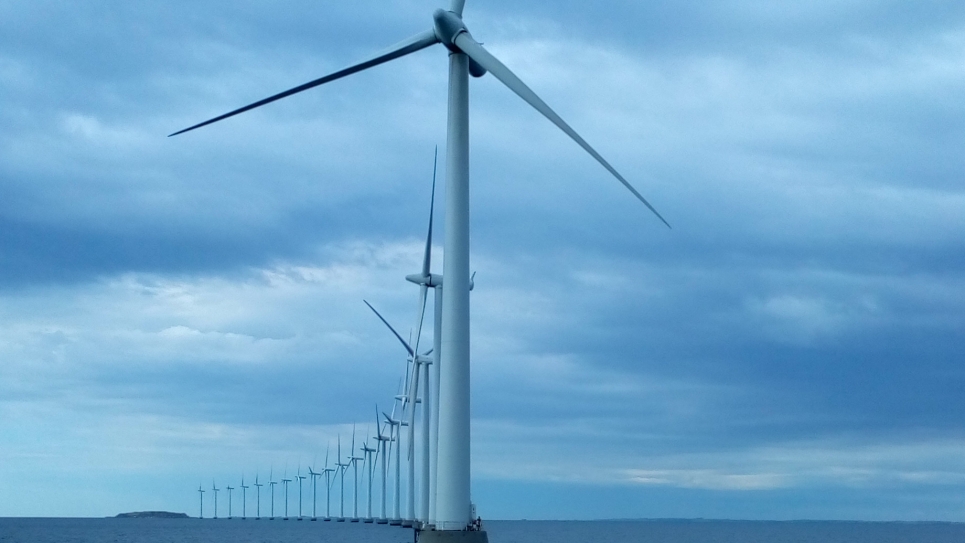
Offshore wind turbine array at Middelgrunden outside Copenhagen, Denmark. Photo credit: S.C. Pryor.
This team from Cornell University utilized ALCF supercomputing resources to research innovations that will enable advancements to U.S. wind systems, reduce the cost of electricity, and accelerate the deployment of wind power.
Recent research by the PI team suggests that if the current offshore wind energy lease areas along the US east coast are subject to deployments of wind turbines at the European average spacing they will meet 3% of national electricity supply. However, the associated levelized cost of energy (LCoE) is critically dependent on the nature of the operating conditions these wind turbines (WT) will be subject to during their anticipated deployment lifetimes of 30 years. Our research seeks to reduce uncertainty in 2 key aspects of likely operating conditions. It is highly responsive to research needs identified by the DoE EERE WETO. We will use high-fidelity simulations with the Weather Research and Forecasting (WRF) model to:
Quantify hydroclimatic conditions associated with wind turbine blade leading edge erosion. WT blade failures and reduced aerodynamic efficiency due to erosion of the leading edge (LEE) is caused by collisions between the rapidly rotating blade and falling hydrometeors. The amount of kinetic energy transferred into the blade and the resulting material stress is dictated by the closing velocity between the hydrometeor and the blade (ƒ(wind speed)) and the hydroclimate (number, size and phase of hydrometeors). We will assess for the first time whether the Weather Research and Forecasting model can be used to predict highly-erosive events. Validation will be performed using in situ rain droplet and hail size distributions and NWS dual-polarization RADAR.
Coupled ocean-atmosphere-wave modeling for improved simulations of wind turbine wakes and dynamic loading. Most simulations of wind resources, wind turbine wakes, and wind turbine operating conditions offshore do not employ models that explicitly treat wind-wave-ocean coupling, even though waves and the ocean strongly interact with the overlying atmosphere and thus modify the wind profile. Additionally, wind-wave misalignment is a key source of structural loading. We will perform simulations with the Coupled-Ocean-Atmosphere- Wave-Sediment Transport (COAWST) Modeling System to improve quantification of wind speeds, turbulence conditions and wind turbine loading in the east coast offshore wind energy lease areas. Our results will inform optimal wind farm layouts, wind turbine selection and power production quantification along with associated uncertainties. Simulations will be led by the PI team but students from Cornell’s M.Eng program will be embedded in each science use case to help in expanding the usage base of HPC.